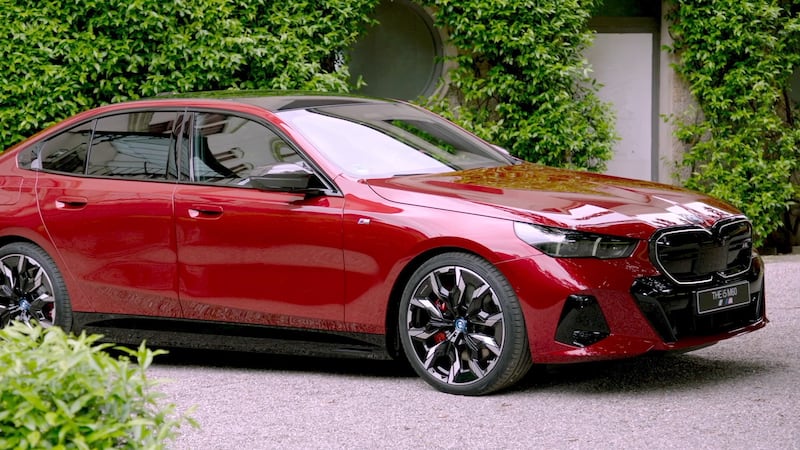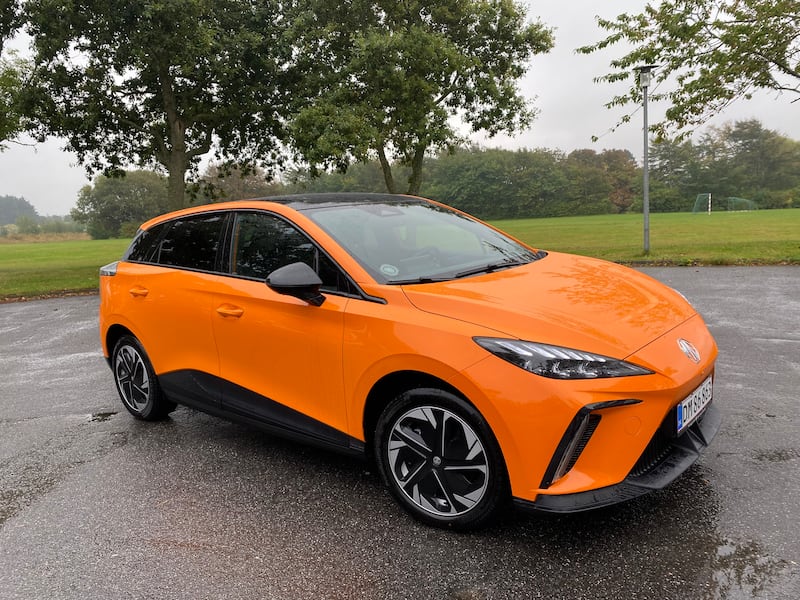A full €20,000: That’s how much more a basic Skoda Superb saloon costs today, compared with what it cost one decade ago when we test-drove the Skoda Superb Combi in Style trim.
That test car was a €40,000 version, but you could have bought a basic Superb for €28,995 at the time.
Fast forward to 2025 and that same basic Superb now costs you €48,395. Yes, there are some new equipment items to consider – more touchscreen technology, updated engines (although, the basic Superb does use essentially the same 2.0-litre TDI diesel that it did in 2015), a standard automatic gearbox where once there would have been a six-speed manual, nicer seat trim etc.
Yet fundamentally it’s the same car doing the same job. For this, its price has gone up by 67 per cent. In case you were wondering, take Ireland’s annual inflation rate over each of those 10 years and it averages out to 1.75 per cent.
READ MORE
I’ve picked on Skoda here, mostly because the Superb can handle a bit of criticism. After all, we recently named it The Irish Times car of the year for 2025, and pricey though it may be, the Superb really is a very hard car to beat as an all-rounder.
Equally, it’s not alone. Car prices across the board have risen almost to the point of insanity.
A decade ago, a basic BMW 5 Series would cost you just shy of €50,000. The same for a Mercedes-Benz E-Class – both stalwart driveway denizens of those who’ve done well this year, and fancied a premium treat.

Now, neither car can be bought for less than €70,000. It’s the same story at the other end of the price lists. A basic Dacia Sandero today costs €18,245. That may not seem an outrageous price tag and the latest Sandero is a far more sophisticated, comfortable and all-round excellent car than a decade ago. But a decade ago, the same basic Sandero cost €12,290.
Of course, there are exceptions. Depending on where you set your benchmark, a Volkswagen Golf costs slightly less than it did in the 1980s. Small victories count for something, eh?
Why is all this happening? Clearly, we live in a more turbulent world.
According to Jeremy Warnock, group product supply and distribution manager at Renault Ireland (which includes the value brand Dacia): “Inflation, raw materials and labour costs are all different facets of the same issue and have definitely been a factor in price increases.
“That said, the auto industry has to contend with a number of additional factors. Regulatory costs have a significant impact. Emissions regulations are constantly tightening and the elimination of substances such as NOx and particulates involves the addition of often costly hardware.
In addition, he points to the new set of safety and cybersecurity regulations (GSR2) introduced last year, which have made several items of safety equipment mandatory on all new cars. Many of these rely on radar and cameras as well as a variety of sensors and the screens required to manage all these systems.
“While many of these systems were already included on mid-level to high-spec cars – and consequently featured on a high proportion of pre-GSR2 cars in Ireland – the new regulations mean there’s no longer the option to have a basic car without them,” says Warnock.
[ What car should I buy in 2025 if I need … an EV?Opens in new window ]
So where can budget-minded motorists now turn? The answer may not be the one you’re expecting.
“Interestingly though, the price increases you ask about really only apply to ICE cars,” said Warnock, meaning cars with internal combustion engines. “Although electric cars had to meet the same GSR2 rules, clearly they already don’t produce exhaust emissions. In addition, increased volumes have improved economies of scale while a faster pace of technological development than we see on ICE has reduced production costs.
“Ironically, given that we still hear so many complaints about EV pricing, we’re now at a point where an electric Renault Scenic is more affordable than a Renault Austral, and the electric Dacia Spring is the most affordable car in Ireland. Not only are EVs more affordable than before but they’re better than ever.”
Going electric to bag a bargain is probably not the answer many of us were expecting in the first months of 2025, but the maths add up – and that’s before you start looking at running costs.
Mention of GSR2 regulations does raise another question, however, and it’s one of value. It should be axiomatic that increasing the standard, legislated-for, levels of safety hardware in cars should increase road safety. Look back to when seat belts became mandatory. Then airbags. Then ABS brakes. Then electronic stability control. Every time, lives were saved and road death statistics fell.
That’s seemingly not happening now, though. GSR2 mandated – as its headline additions – intelligent speed assist, autonomous emergency braking, driver drowsiness and attention warning, and emergency lane keeping systems.
Autonomous emergency braking is a definite good, especially around town and at low speeds, but the other three are messy at best. All three alerts for speed, attention and lane-keeping are wildly different in their performance across different vehicles, and are often haunted with false alerts.
Speed limit warnings beep at you because they’ve spotted the wrong sign, or haven’t noticed that you’ve moved from a city street to a main road. Attention monitor systems chide you for something as basic as looking out of the side window or over your shoulder when changing lanes. Surely a driver who’s moving their head around is better informed than one staring directly ahead? Lane-keeping systems can be appallingly intrusive and can sometimes start to apply steering correction just when you really need to be turning the other way.
So, are Irish buyers actually getting value for money with these troublesome systems?
According to Cordelia Wilson, communications director of independent safety experts Euro Ncap, the answer is a very firm yes.
“It keeps drivers focused, when distracted, keeps vehicles in lanes, is a second pair of eyes, when we are tired. ADAS (advanced driver assistance system) is a technology that helps us all to become better and fundamentally safer drivers.
“However, many customers do find ADAS systems annoying, but that is not necessarily due to the system, it’s because of the way the system responds with the driver in particular vehicles and Euro Ncap is working with manufacturers to try and standardise the noises, to ensure that they are not annoying.
“There is also work to be done in making consumers/drivers understand the importance of these technologies, so they don’t switch them off and as you say there should be more investment in driver training. We have not gone too far; we have not gone far enough.”
The increasing regulation and a flat sales market for cars in Europe means that profits at the region’s carmakers are stalling and prices are going up.
And it isn’t just an Irish issue. According to motor industry analysts Jato Dynamics, the average retail price of a car in Germany – Europe’s largest car market – is €56,735. In France, the average totalled almost €49,000, while it rises to €54,000 in Spain and €56,000 in Italy.
In the United Kingdom, the average retail price of a brand-new car is £49,451, equating to €59,360 at the November 2024 exchange rate.
In Ireland, we’re getting off relatively lightly, with the average price of a new car here heading towards €45,000, although it must be noted our market doesn’t feature some of the higher-end models – Ferrari, Lamborghini, Bentley and so on – that somewhat skew the averages elsewhere.
The double-whammy of increasing safety equipment legislation, plus the imperative to develop entire families of electric cars by 2035, means that European carmakers have little choice but to raise prices, especially against the backdrop of continuing fallouts from Covid and component shortages. Rising energy prices don’t help either, and now that fire is being stoked by the arrival of Chinese brands.

Jato’s advice is pretty stark: “The impacts of the global pandemic – most notably the semiconductor shortage – created a state of disequilibrium with supply unable to meet demand, triggering longer waiting times and higher prices for consumers.
“Between 2021 and 2022, the average retail price of new cars increased between 6.3 per cent and 12.5 per cent across Europe’s big five markets. A year later, this trend had accelerated, with prices rising from 6.7 per cent to 16.8 per cent, despite slowing inflation. As a result, western Europe’s automotive market lost the equivalent of 3.3 million units in new car sales between 2019 and 2023. [Carmakers] may have been able to remain profitable despite higher price increases and longer waiting times for customers.
“However, the emergence of China as an automotive superpower has changed the game entirely. Western companies must look for new ways to reduce their prices in an increasingly competitive market, or risk extinction.”




















